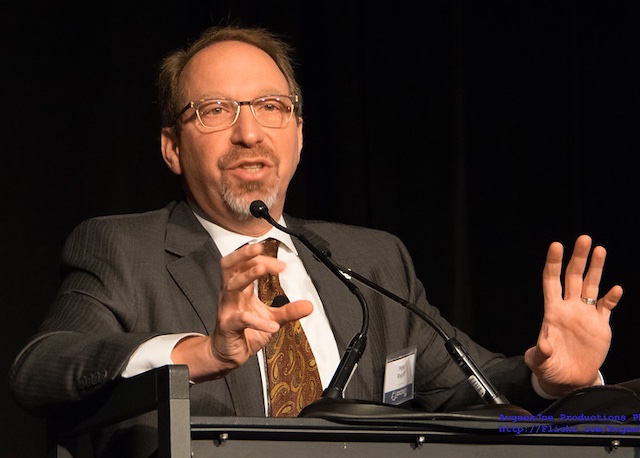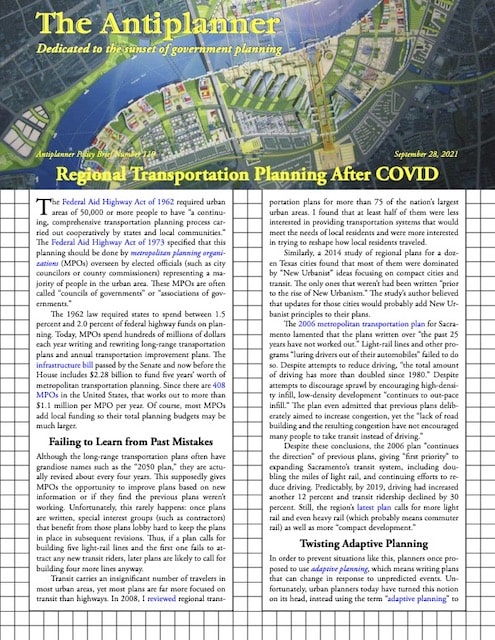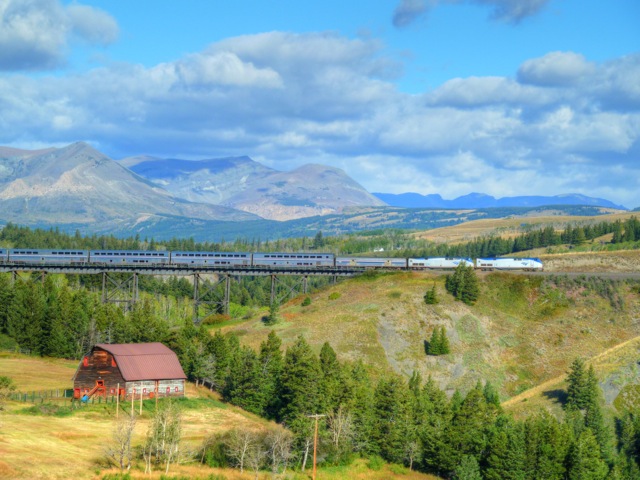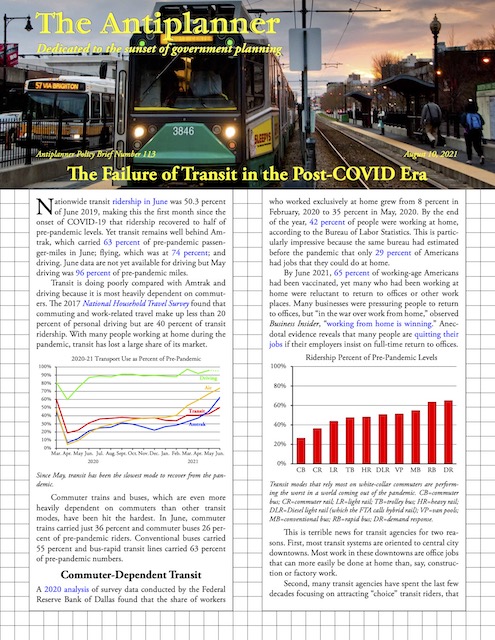After six contentious years, Peter Rogoff will leave his $379,600 a year job as CEO of Sound Transit, where he oversaw the construction of billions of dollars of light-rail lines that he didn’t believe in. It’s not clear that his departure is entirely voluntary: he apparently told the Sound Transit board that “he did not foresee remaining in his role beyond the end of 2022.” The board responded by not renewing his contract, which expires in May, effectively firing him.
Peter Rogoff speaking about “advanced transportation technologies” (which don’t include light rail) in 2016. Photo by AvgeekJoe.
I liked Rogoff when he was making $180,000 a year as the administrator of the Federal Transit Administration in the early Obama years. In his first year, he made three discoveries:
- America’s rail transit systems had a $77 billion maintenance backlog (since increased to more than $100 billion);
- America’s rail transit agencies would rather build new rail lines than maintain their existing ones;
- In most situations, bus-rapid transit could do everything rail transit could do for a lot less money.













